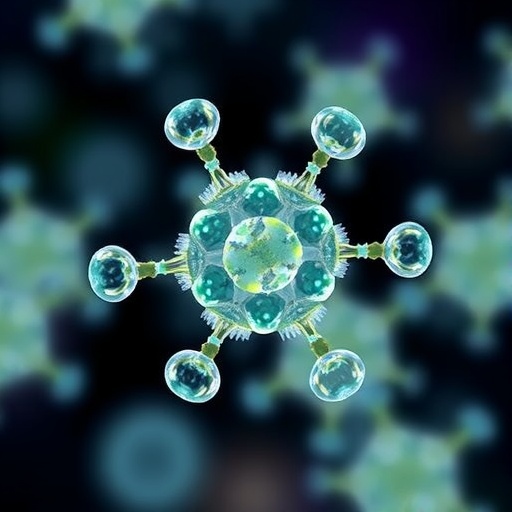In a groundbreaking study published in “Scientific Reports,” researchers have unveiled a novel and efficient method for synthesizing aqueous soluble Silymarin nanocrystals derived from Silybum marianum, commonly known as milk thistle. This remarkable advancement not only enhances the bioavailability of Silymarin but also presents promising insights into its antibacterial and cytotoxic properties, potentially revolutionizing the use of herbal medicine in contemporary healthcare.
The quest for enhancing the solubility and efficacy of natural compounds has long been a challenge in pharmacology, particularly for those derived from plant sources. Silymarin, a complex mixture of flavonolignans extracted from Silybum marianum, has gained significant attention due to its therapeutic potential. However, its poor water solubility often limits its bioavailability and, consequently, its effectiveness in clinical applications. This study addresses these limitations head-on, utilizing cutting-edge techniques to create nanoparticles that can improve solubility and bioactivity.
In the synthesized study, the authors employed a sophisticated method combining solvent evaporation and high-pressure homogenization to achieve the desired nanocrystal formation. This two-step process not only ensured the uniform sizing of the nanoparticles but also preserved the integrity of the bioactive compounds within Silymarin. The resulting nanocrystals exhibited dramatically enhanced aqueous solubility, illustrating the potential of nanotechnology to transform how herbal medicines are administered and absorbed in the body.
Further investigation into the physical and chemical properties of the synthesized Silymarin nanocrystals revealed remarkable stability and dispersibility in aqueous solutions. This is particularly relevant for pharmaceutical applications, where solutions often need to remain homogeneously mixed over time. The researchers conducted various analyses, including dynamic light scattering and transmission electron microscopy, to characterize the nanocrystals. The data supported that the nanoparticles not only retained the desired qualities of Silymarin but also enhanced its pharmacological effects.
One of the most compelling aspects of the study was the evaluation of the antibacterial properties of the Silymarin nanocrystals. The researchers conducted in vitro experiments against a series of pathogenic bacteria, including Escherichia coli and Staphylococcus aureus. The findings were promising; the nanocrystals exhibited significant antibacterial activity, suggesting that Silymarin may offer a dual function as both an antibacterial agent and a natural remedy for conditions associated with bacterial infections.
Alongside antibacterial insights, the study extended its exploration into the cytotoxic effects of the synthesized nanocrystals on cancer cell lines. By assessing the viability of various cancer cell types after exposure to different concentrations of Silymarin nanocrystals, the researchers revealed a notable cytotoxic potential. This indicates that Silymarin – particularly in its nanoparticulate form – could serve as a viable candidate in the development of anti-cancer therapies.
One of the critical factors contributing to the success of this study is the innovative approach to increasing the bioavailability of natural compounds, a feat that has eluded researchers for years. The synergy between traditional herbal medicine and modern nanotechnology presents a promising frontier for the pharmaceutical industry. It opens avenues for further research into other plant-derived compounds that could substantially benefit from similar methodologies.
The implications of this research extend beyond merely synthesizing nanocrystals. It suggests a paradigm shift in how we view and utilize herbal remedies in medicine. Instead of relegating natural products to the sidelines of pharmacology, the integration of nanotechnology offers a pathway to more effective treatments that harness the power of nature while adhering to the rigorous demands of modern medicine.
The ongoing discourse surrounding the safety and efficacy of nanomaterials also plays a crucial role in the broader conversation about their application in medicine. While the results from this research are promising, continuous evaluation of the long-term effects and interactions of these nanocrystals within biological systems will be crucial in establishing their safety profiles. Regulatory frameworks will need to evolve alongside these advancements to ensure that patients receive effective and safe therapies.
In summary, the study conducted by Sirvani et al. not only highlights the potential of Silymarin nanocrystals but also sets a precedent for future research into nanoparticle applications in herbal medicine. The combination of enhanced solubility, antibacterial activity, and cytotoxic potential embodies a significant step forward in effective therapeutic strategies. As we continue to unravel the rich tapestry of plant-derived compounds and their biological activities, the marriage of nature and technology will undoubtedly play a pivotal role in shaping the future of medicine.
In conclusion, this research represents a powerful statement about the growing intersection of natural products and nanotechnology, advocating for further exploration into healing modalities that blend age-old remedies with cutting-edge science. The world is just beginning to understand the vast potential that lies in healing plants, and with studies like this, the future of herbal medicine appears brighter than ever.
Subject of Research: Synthesis of Silymarin nanocrystals from Silybum marianum and assessment of their antibacterial and cytotoxic properties
Article Title: Efficient synthesis of aqueous soluble Silymarin nanocrystals from Silybum marianum and assessment of their antibacterial and cytotoxicity insights.
Article References:
Sirvani, I., Sabouri, Z., Mostafapour, A. et al. Efficient synthesis of aqueous soluble Silymarin nanocrystals from Silybum marianum and assessment of their antibacterial and cytotoxicity insights.Sci Rep 15, 35529 (2025). https://doi.org/10.1038/s41598-025-19501-w
Image Credits: AI Generated
DOI: 10.1038/s41598-025-19501-w
Keywords: Silymarin, Silybum marianum, nanocrystals, antibacterial properties, cytotoxic effects, bioavailability, herbal medicine.
Tags: antibacterial potential of Silymarinaqueous soluble herbal extractsbioavailability of natural compoundscytotoxic properties of Silymarinenhancement of solubility in drugsherbal medicine advancementsinnovative methods in natural product synthesisnanoparticles in healthcare applicationsnanotechnology in pharmacologySilybum marianum extractionSilymarin nanocrystalstherapeutic potential of flavonolignans





